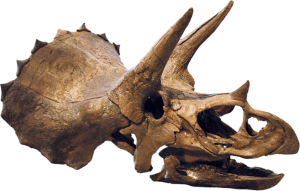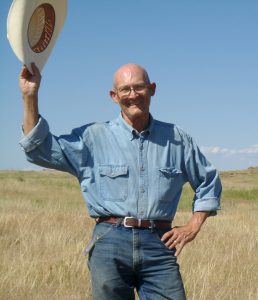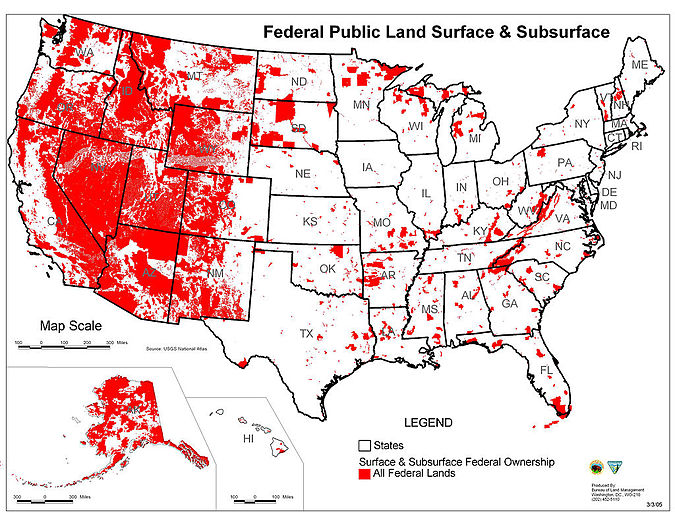Before you can actually hike and search, you need to gain permission to search on land that has the potential for dinosaur fossils. I use a 5 step process that is detailed in the next few sections.
- Find from published sources where others have found dinosaurs.
- Identify the sedimentary formation in which those sites were located.
- Find the extent of those formations elsewhere beyond the fossil site.
- Identify the location of private land containing those formations.
- Contact the landowner and ask for permission to search
There are likely many ways to approach this issue. What I share has worked well for me and can be applied to any state or region. While this does work, it is not easy. It is often very tedious, time consuming and frustrating. But, it can lead to the land surface and ownership information I need. I repeat the process in different areas again and again until I can complete Step 5 and gain permission to search.
Past Dinosaur Discovery Sites
I read that the best place to find fossils is to look where others have found fossils. So I researched the many sites that describe where fossils had been found in the past. You do not need to know the exact location of a past dig site. You just need to locate the general area and the geological formation in which it was found. A successful dig site telegraphs that a particular age sediment was at the surface.
A good online source for the general location of fossil discoveries around the world can be found at: http://www.paleobiodb.org/navigator. The YouTube Paleobio Database Navigator Intro (www.youtube.com/watch?v=n_FkX4Vf_8I) describes how to use this location site. An exhaustive list of sites where fossils have been found in the US and Canada is found at http://donaldkenney.x10.mx/FOSSINDX.HTM. Also data on some of the species that have been found in each state is at:
http://www.enchantedlearning.com/subjects/dinosaurs/dinofossils/locations/usa.shtml
https://www.thoughtco.com/dinosaurs-and-prehistoric-animals-by-state-4150411
https://www.citylab.com/design/2015/07/mapping-everywhere-fossils-have-been-found-in-the-us/398456/
https://www.livescience.com/32816-where-are-the-best-places-to-find-dinosaur-fossils.html
https://en.wikipedia.org/wiki/List_of_North_American_dinosaurs
After you study these sites you will realize that fossils are found everywhere.
The Paleobiodb database appears to be those dinosaur sites that have been reported in some public media. Fossil sites on private land are rarely publicized. I must know of over 40 different dig sites that I have recorded in my field notebook but have never reported. To whom does one report a discovery made on private land? I have tried. I ounce offered my T-Rex Tibia to a University for their specialized scientific study. They appreciated the offer and my specimen was in perfect condition. But, the study had so many restrictions and regulations that my discovery was deemed inadmissible.
There must be hundreds of amateurs like myself who know of thousands of dinosaur sites that will never show up on any database. You may want to network with paleo-amateurs you meet. Just ask area locals. I have found that many ranchmen love to tell you about how their great grandfather found a fossil up on back ridge somewhere. The Paleobiodb site is always a good place to start.
Many published dinosaur sites in the U.S. are on state or federal land or in parks where excavation is not allowed. In the US most dinosaurs have been found in several western states where the inland sea came and went during the Mesozoic period. See Mesozoic maps at https://deeptimemaps.com/southwest-north-america-thumbnails/
The most prolific dinosaur states top to bottom are MT, WY, UT, CO, AZ, & NM. In those states about 32% of the land is owned by the federal government and is managed by the BLM, Bureau of Land Management. Another 10% is state land and another 9% is tribal land. BLM land by state is MT-29%, WY-42.1%, UT-64.5%, CO-35.6%, AZ-38.6%, NM-34.7%. This leaves about 49% of the land in these states in private hands or over 200 million acres. That’s room enough for me.




One Response
Every website listed above, that I have tried, is still responding and seems fairly up-to-date! DonaldKenney is a fascinating list.